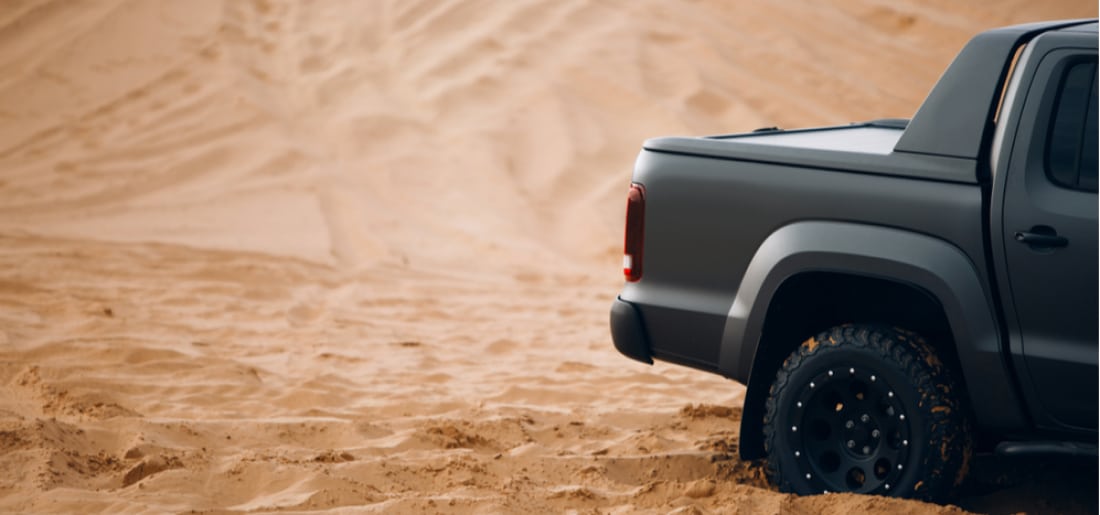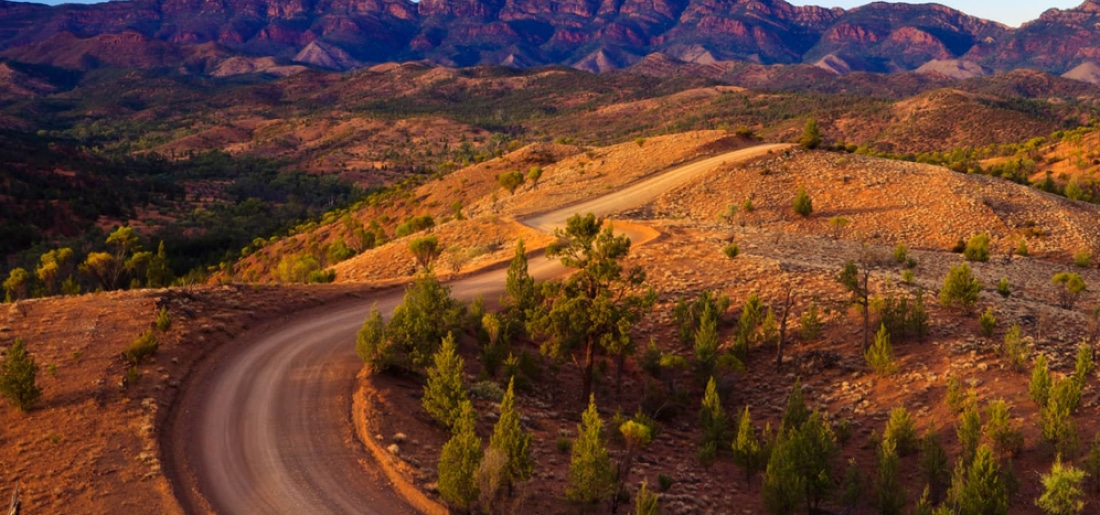TIPS FOR 4X4 SELF RECOVERY
We’ve all been there and headed off for a weekend in the bush without a winch or a mate, decided to explore a side track and become stuck. If nothing else you should always have, at least, a basic recovery kit in the back of your rig or, at the very minimum, a shovel.
If you remain calm and think about what you’re doing and follow our five tips below, you should be able to get yourself out of most situations. And always, always remember, if in doubt, don’t drive it.
Adjust your tyre pressures
If your tyres are digging into the ground, or you’re struggling to get traction and gather momentum, chances are that your tyre pressures aren’t low enough. People are often hesitant to drop their tyre pressures below 20-25psi but they shouldn’t be. Those pressures are a good start, but combined with proper driving techniques (read: slow and no sharp turns) you can easily go quite a bit lower. So, if your valve stems are still accessible, let a bit more air out. When you get towards that 15psi threshold, your tyres will really start to flatten out along the bottom – giving you a much better chance of grabbing traction from the ground. It goes without saying that you’ll need a way of pumping your tyres back up, so, only let air out of your tyres if you’ve got a compressor in your rig.
Dig, dig, and dig some more
It might be a lot easier to sit in the air-conditioning and rev the engine with a hope your 4X4 will claw itself out, but you’re probably just going to end up digging yourself even further into the mire. Now’s the time to get out of your rig and grab your shovel. The long-handled shovel is probably your most powerful ally in the event of a bogging. Yes, you’ll get dirty and sweaty; but embrace it. It’s part of the 4WDing adventure. Clear as much earth/sand/mud/clay out from underneath your vehicle as possible, as well as from around the wheels. If your trusty shovel won’t clear the way for you completely (combined with the above point), it will at least make the upcoming recovery a much safer and less stressful process (both emotionally and mechanically).
Be a Jerk
Not in the literal sense, but you can sometimes turn the tide of traction – especially if you’re only just stuck or getting stuck – by repeatedly and briskly jerking the steering wheel back and forth to try and divert drive between your front wheels. If one is spinning freely, turning it back and forth can force it to grab traction and push some drive to the other wheel. This fast ‘jerking’ motion can also shift your vehicle from side to side as well, shifting your weight to different places and onto different bits of track. Sometimes, it only takes a tiny change in position to keep moving in the right direction.
Back and forth
If you’ve just come to a grinding halt in low-traction mud, sand or clay, you might be able to build yourself a more tractable path by running your 4X4 back and forth a few times. You must be careful with this one, though as it can sometimes lead to you becoming more stuck … stop if that’s the case. If conditions are favourable however, you might be able to reverse up a little bit (even as little as one metre), gather a tiny bit of momentum and push forward, paying attention as to whether you make any more forward progress. The idea here is that you can compress the ground fore and aft of you, giving you a slowly growing ‘track’ to build momentum and slowly work your way out. But if you’re digging in too much or just spinning wheels and damaging the track, it’s not worth it. So, see above and get out and dig.
Gears and throttle
Sometimes, power is your best friend off-road. It can get you out of all sorts of sticky situations. But there are other times when it can cause troubles: too much torque will be too willing to break traction and just spin and dig; where less torque could actually be more beneficial. There are two ways to easily adjust this. And that is, gear selection and throttle control. If you’re struggling for grip on a low-traction surface in one of your lowest gears, try a higher gear. Gearing effectively multiplies the engine’s available torque; lower gears have higher multiplication, turning your wheels slower and with more force. Your other option is, of course, reducing your throttle input. Ease off the throttle a little bit, getting your revs and engine load closer towards a gentle idle. If you’re lucky, your wheels might just stop spinning, and start biting.
This article was originally published on mr4x4.com.au.




